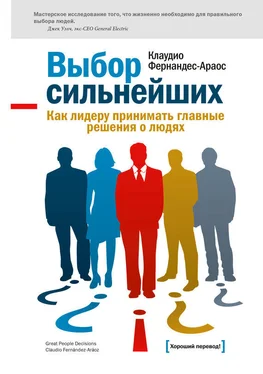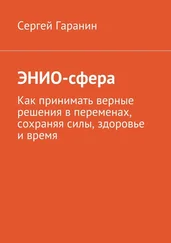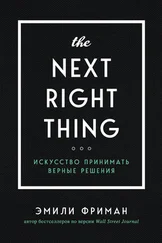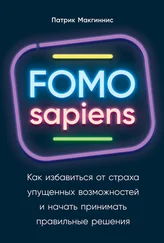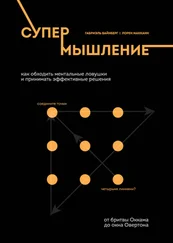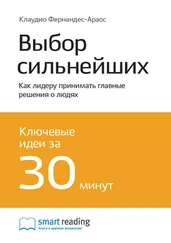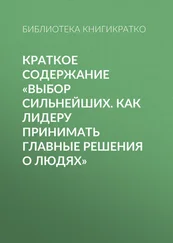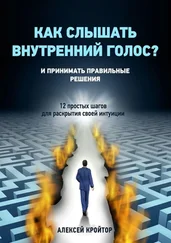“The Performance Impact of New CEOs,” MIT Sloan Management Review, winter 2001, p. 14.
“The Performance Impact of New CEOs,” MIT Sloan Management Review, winter 2001, p. 14.
“Leadership and Change,” Knowledge Wharton, March 23 – April 5, 2006.
Эта история взята из выкладки в Википедию Роберта Айгера, к которой я обратился в августе 2006 г.
Valerie I. Sessa and Jodi J. Taylor, The Executive Selection: Strategies for Success (Center for Creative Leadership, Jossey-Bass, 2000), pp. 73–74.
Barry Jaruzelski, Ken Dehoff, and Rakesh Bordia, “Money Isn’t Everything,” Booz Allen Hamilton Inc, Resilience Report, 2005: 3.
Alexander Kandybin and Martin Kihn, “Raising Your Return on Innovation Investment,” Strategy + Business, May 11, 2004, 35.
Henry Chesbrough, Open Innovation: The New Imperative for Creating and Profiting from Technology (Harvard Business School Press, 2003).
Keld Laursen and Ammon Salter, “Open for Innovation: The Role of Openness in Explaining Innovation Performance among UK Manufacturing Firms,” Strategic Management Journal 27(2), 2006, 131–150.
John S. Hammond, Ralph L. Keeney, and Howard Raiffa, Smart Choices: A Practical Guide to Making Better Decisions (Harvard Business School Press, 1999), p. 47.
Rakesh Khurana, “Finding the Right CEO: Why Boards Often Make Poor Choices,” MIT Sloan Management Review, fall 2001.
Gerd Gigerenzer and Peter M. Todd, Simple Heuristics That Make Us Smart (Oxford University Press, 2000). См. главу “From Pride and Prejudice to Persuasion,” pp. 287–308.
Gerd Gigerenzer and Peter M. Todd, Simple Heuristics That Make Us Smart (Oxford University Press, 2000). См. главу “From Pride and Prejudice to Persuasion,” pp. 287–308.
Valerie I. Sessa, Robert Kaiser, Jodi J. Taylor, and Richard J. Campbell, “Executive Selection: A Research Report on What Works and What Doesn’t” (Center for Creative Leadership, 1998), p. 42.
Allen I. Kraut, “A Powerful and Simple Way to Predict Executive Success: Results from a 25-Year Study of Peer Evaluations,” представлено на форуме Общества индустриальной и организационной психологии Leading Edge Consortium, St. Louis, Missouri, October 28, 2005 ( http://www.siop.org/lec/kraut.htm).
Mark Granovetter, Getting a Job: A Study of Contacts and Careers (University of Chicago Press, 1995, 1974), pp. 11–16.
Говоря о традиционных источниках при поиске кандидатов, заинтересованные в сопоставлении их относительных преимуществ и недостатков могут обратиться к главе 2 книги Дайаны Артур Recruiting, Interviewing, Selecting and Orienting New Employees (American Management Association) – там приведен список основных качественных преимуществ и недостатков большого числа традиционных источников, в том числе рекламы.
Patricia Nakache, “Finding Talent on the Internet,” Harvard Business Review, April 1997.
Theodore Levitt, The Marketing Imagination (Free Press, 1986, 1983), p. 129.
Duncan J. Watts, Six Degrees: The Science of a Connected Age (W.W. Norton, 2003), pp. 37–39.
Duncan J. Watts, Six Degrees: The Science of a Connected Age (W.W. Norton, 2003), p. 95.
Rakesh Khurana, “Market Triads: A Theoretical and Empirical Analysis of Market Intermediation,” Journal for the Theory of Social Behavior 32(2), June 2002: p. 253.
Valerie I. Sessa, Robert Kaiser, Jodi J. Taylor, and Richard J. Campbell. “Executive Selection: A Research Report on What Works and What Doesn’t” (Center for Creative Leadership, 1998), p. 42.
Allen I. Huffcutt, Philip L. Roth, and Michael A. McDaniel, “A Meta-Analytic Investigation of Cognitive Ability in Employment Interview Evaluations: Moderating Characteristics and Implications for Incremental Validity,” Journal of Applied Psychology 81(5), 1996: 459–473.
James Tapper, “Is This Britain’s Most Brazen Conwoman?” The Mail on Sunday, November 27, 2005.
James B. Mintz, “Résumé Fraud Starts at the Top,” Across the Board, July – August 2006: 45–47.
T.W. Dougherty and D.B. Turban, “Behavioral Confirmation of Interviewer Expectations,” in The Employment Interview Handbook, edited by R.W. Eder and M.M. Harris (Thousand Oaks, CA: Sage, 1999).
Malcolm Gladwell, Blink: The Power of Thinking Without Thinking. (Little, Brown, January 2005), pp. 73–74.
Malcolm Gladwell, Blink: The Power of Thinking Without Thinking. (Little, Brown, January 2005), p. 64.
Daniel Goleman, Social Intelligence: The New Science of Human Relationships (Bantam Books, 2006), p. 67.
T.W. Dougherty, D.B. Turban, and J.C. Callender, “Confirming First Impressions in the Employment Interview: A Field Study of Interviewer Behavior,” Journal of Applied Psychology 79, 1994: 659–665.
David C. McClelland, “Identifying Competencies with Behavioral-Event Interviews,” Psychological Science 9(5), September 1998.
Richard E. Boyatzis, “Using Tipping Points of Emotional Intelligence and Cognitive Competencies to Predict Financial Performance of Leaders” (Case Western Reserve University, Psicothema 2006), vol. 18, suppl., pp. 124–131.
Frank L. Schmidt and John E. Hunter, “The Validity and Utility of Selection Methods in Personnel Psychology: Practical and Theoretical Implications of 85 Years of Research Findings,” Psychological Bulletin 124(2), 1998: 262–274.
Claudio Fernández-Aráoz, “Hiring Without Firing,” Harvard Business Review , July-August 1999: 109–120.
Allen I. Huffcutt and David J. Woehr, “Further Analysis of Employment Interview Validity: A Quantitative Evaluation of Interviewer-Related Structuring Methods,” Journal of Organizational Behavior 20(4), 1999: 549–560.
Daniel Goleman, Social Intelligence: The New Science of Human Relationships (Bantam Books, 2006), p. 98.
Robert W. Eder and Michael M. Harris, The Employment Interview Handbook (Sage Publications, 1999). See Chapter 14, “Are Some Interviewers Better Than Others?” by Laura M. Graves and Ronald J. Karren, pp. 243–258.
Читать дальше
Конец ознакомительного отрывка
Купить книгу
